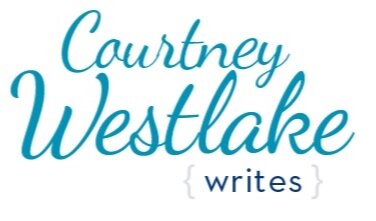Try my top time management tip!
Almost exactly five years ago, I wrote in my email newsletter about my "best secret for time management." (Not signed up for Story Minded yet? Join here!)
As I noted then, over the years I've become keenly aware that more money can always be accumulated ... but more time cannot.
So in about 2018, I came up with what I considered my non-negotiables in my day and my week, to ensure I am living a life according to my values and priorities.
Those included (not in a particular order):
Personal reading time
Quality time with my kids (ie not driving to an event, but engaging in a meaningful activity like play or reading)
Good conversation and quality time with my husband
Deep time spent writing
I used these as anchor points to my planning and commitments, developing the concept of my "realistic ideal day" and "realistic ideal week" (since not all activities are daily).
As I wrote in that newsletter 5 years ago:
The reason this concept works well — for me anyway — is because I’ve discovered it’s less about the amount of time and more about the activities I’m engaging in.
Some activities fill me up, and others deplete me much more easily. So each new season in life is both a reminder and an opportunity to choose the latter.
The question to ask with time management is NOT how to fit in everything you “have” to do.
The best place to start is by asking what would be the most ideal way you want to personally spend your day or your week. Then try structuring your time based on that.
Five Years Later...
Life has changed a lot in these passing years. I now have two teenagers, so creative play has largely been replaced by things like laughing at memes together. They generally don't want me to read out loud to them anymore, but we still talk about book recommendations.
Personal time reading. I'm always happier when I'm in the middle of a good book! I'm also intentional about being around people who like to read: I'm in a monthly book club, I run a seasonal book club for moms and one for jr. high-aged kids, and I serve on my local library's board of trustees. I also try to read the books my kids are reading for school so we can discuss at home. (If you need a new novel rec, I loved How to Age Disgracefully by Clare Pooley.)
Deep writing work. At this point, I know how I like to work: I'm most motivated at the start of the week and in the mornings. So I pencil in my deep work for those times - which helps everything else fall into place the rest of the week.
Quality time with my husband and kids. My oldest is a sophomore (just started driving!), so I am feeling the urgency of intentional time as a family of four while he has a couple years left at home. My ideal quality time for family looks like: weekend adventures, eating dinner together, travels, trying local restaurants, and time with my husband on Saturdays going to the farmers market or hiking while the kids sleep in.
(getting to see our son's Eagle project signs on our recent hike!)
What I’ve changed
In this season, I've added in some new priorities to my ideal week - some that I've admittedly neglected up until the last year or so.
Friend relationships. One-on-one time with my friends has become so important to me, especially when we can be active together - hiking, walking, kayaking. But meaningful conversation over lunch or coffee is the bee's knees too.
Bible study. I do an international program called Bible Study Fellowship and was asked this year to be a student leader, teaching a class of 6- to 8-year-olds one morning each week. It's true what they say: teaching something helps you learn it so much better!
Investing in personal interests. A wheel throwing/pottery class, reading history books, attending an art history program and an author lecture = just some of the fun things I've done for myself this fall! I'm also giving time to causes I care about, helping to launch a new support program for my daughter's rare disorder and supporting local literacy initiatives in several ways (including marketing!)
Oh - and this doesn't take much time, but I just had to mention that we got a new kitty and she's precious :) Meet Mabel!
It feels like a lot to list that all out, but when you stretch those things over a week (or sometimes even longer), I can make the time. Especially because each activity and commitment energizes me!
So how can you use this concept for your own time management?
Start with your "must dos" (sleep, for one).
Add your personal non-negotiables.
Make some space for your "would love to dos" (a walk with a friend, perhaps, or time to read a good book at the library).
Use this roadmap for planning your weeks and blocking off your time accordingly.
Say no as much as possible to the things that take away from your ideal week!
Give this concept a try!
Want to read more like this? Sign up for my marketing-focused newsletter Story Minded.
What an Irish fife concert taught me about marketing
It all begins with an idea.
Over the summer, my family went to Ireland to visit friends (our second time in this magical land!)
We happened to time our trip with the final weekend of the big annual festival held in our friends’ small town in rural County Donegal.
And this year’s festivities included an evening performance of Ireland’s first-ever fife orchestra, Idir an Dá Ghaoth (please don’t ask me to pronounce that!)
Not only did this concert offer incredible music and song to enjoy — but in between each song, a narrator weaved the story of the history of the fifing tradition in the region over the last 150 years...
Stories of families, of hardships, of celebrations.
The importance of fife bands during the Potato Famine, the world wars, the Troubles.
As the music swelled, I wasn’t just listening. I was feeling.
I mean, my teens make fun of how easily I cry… but gosh, I had tears streaming down my face several times! (My Irish friend grabbed my hand when she noticed and said “I’m glad it’s not just me!”)
The stories made the music absolutely unforgettable.
That’s the power of storytelling: it pulls the audience into an emotional journey.
And that’s exactly what we need to focus on in marketing too.
You can do this even without the booming of drums!
A few ways to infuse your storytelling with that kind of emotional resonance:
Start with a moment, not a message. Instead of launching into “what” you offer, begin with a vivid scene. This hooks audience emotionally before you deliver your solution.
Show transformation. Every great story is about change. I was reminded of this when I watched Beauty and the Beast on the flight home and saw the Beast move from selfish to selfless. In marketing, share where your customer started, the challenge they faced, and the transformation they experienced with your product or service.
Lean into emotion. Facts inform, but feelings move people to act. It never hurts to share concrete numbers (50% time savings, and so on). But what sticks is the frustration, relief or elation inside the story.
Keep the reader as the hero. Always remember to position your customer as the hero overcoming obstacles, with your product or service as the guide. (Refer back to my newsletter about this if you need a reminder.)
Tie it back to purpose. Just like the Irish orchestra wove meaning into their music with narration, your stories should circle back to why your work matters and the deeper value you provide.
When you tell a story well, your readers not only understand your message, but they also feel it.
And when they feel it, they remember it.
So as you sit down to plan upcoming marketing strategy, instead of thinking “what should I say?”, focus instead on: “what story can I tell to move my reader?”




